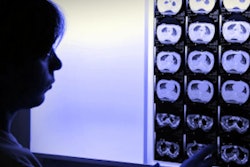
The underrepresentation of women in academic diagnostic radiology has had a ripple effect in nuclear medicine, where men outnumber women by almost 6-to-1 in professorial and leadership positions in the U.S. and Canada, according to a study published in the January issue of the American Journal of Roentgenology.
In a review of more than 200 academic positions, researchers found that men occupy 86% of the leadership ranks. Interestingly, the disparity exists despite the genders having similar research experience (AJR, January 2019, Vol. 212:1, pp. 146-150).
"This difference in numbers is unlikely to be because of academic performance, given that both genders had comparable academic performance metrics in our study," wrote the group led by Dr. Saba Moghimi from the University of Toronto. "The results show the need for devising strategies to promote diversity in academic and leadership positions across nuclear medicine specialists."
While the number of female medical students has risen over the past three decades, studies have shown that women account for only 25% of current residents in training. The length of training, patient interaction, and exposure to mentors have been cited as potential factors in women's interest, or lack thereof, in medical specialties.
This dearth of female clinicians is a precursor to their absence in higher positions within academia. As for nuclear medicine, a lack of data has made it difficult to determine why there is a gender disparity in this specialty.
To delve deeper into this issue, Moghimi and colleagues used the Fellowship and Residency Electronic Interactive Database (FREIDA) and Canadian Resident Matching Service (CaRMS) to compile a list 237 faculty members in nuclear medicine. Within that group were 58 women (24%). Further review showed that women held 14% of leadership roles.
| Nuclear medicine academic faculty members by gender | ||
| Position | Male | Female |
| Professor | 35% | 16% |
| Assistant professor | 38% | 67% |
| Associate professor | 27% | 17% |
Male and female subjects had similar numbers of published articles, citations, and total years of research at all three professorial levels. Thus, the difference in gender ranks "cannot be explained by academic performance because male and female faculty members had comparable performance markers," the authors wrote.
So, why is there such a disparity in gender within academia?
The researchers suggested the age of the faculty, employment status (full time versus part time), years of employment, and contract and tenured positions could contribute to the gender differences, as well as differences in salary.
As for possible solutions, promoting diversity in leadership roles could help lessen or eliminate gender discrepancies in academia, Moghimi and colleagues wrote.
"Overcoming this discrepancy may have a lasting and meaningful impact by increasing role models who can inspire the upcoming female medical students to pursue a career in radiology," they concluded.




















